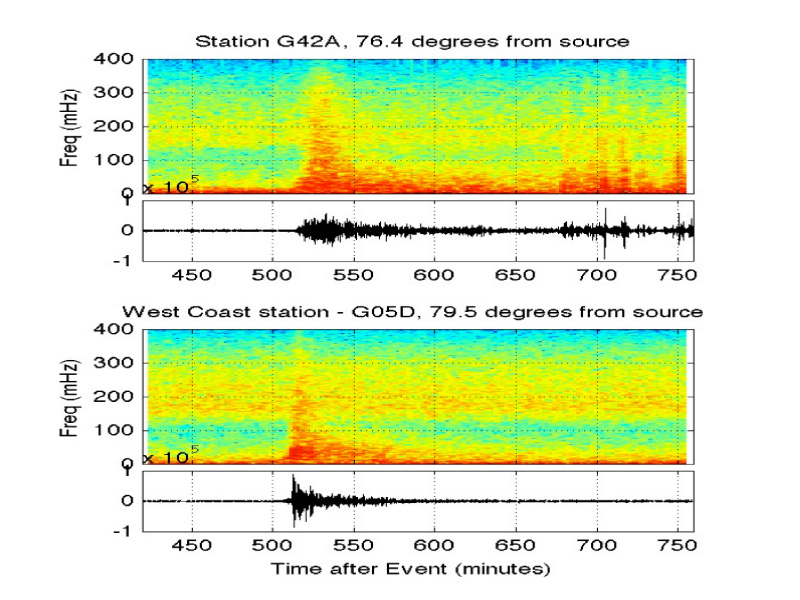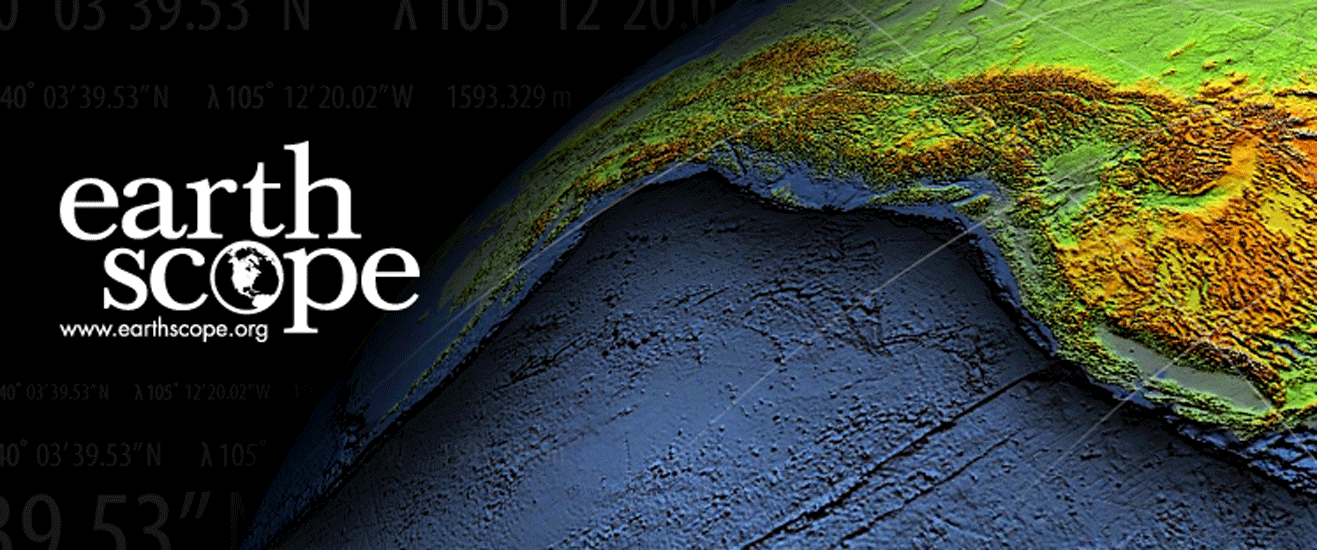By Catherine D. de Groot-Hedlin and Michael Hedlin - Spring 2013
The large meteorite that entered Earth's atmosphere above Chelyabinsk, Russia last month drew attention to the USArray Transportable Array (TA). Significant overpressure from the shock wave damaged structures in Chelyabinsk, blew in thousands of windows and injured over 1,000 people - mainly due to flying glass. A preliminary study of seismic data shows this event generated not only very low amplitude body waves at high frequencies, but also high amplitude, long-period surface waves. This perhaps is not surprising due to the large footprint of the meteorite's shock wave. A large release of energy is believed to have come from an explosion of the disintegrating bolide that occurred at an altitude of ~30 km near the end of the ballistic entry path. The shock wave from this explosion, or from the combined explosive and ballistic source, excited large Rayleigh waves that have been seen at GSN stations to 40°. The waves might have been detected at more distant stations if it were not for interference from surface waves excited by a Mw 5.8 earthquake in the Tonga Trench that occurred 18 minutes before the arrival of the meteorite. Preliminary work indicates that the TA did not record the event seismically as it was located at epicentral distances of over 70°. However, air pressure and infrasound sensors recently added to the TA recorded the passage of a long wave train of infrasound signals. Although the entry and final burst of the meteorite occurred over a 16 second time span, the wave train seen crossing the TA lasted for over 50 minutes. The TA shows that the speed of sound crossing the polar region to the western United States was approximately 290 meters per second while the main part of the TA, in the eastern United States, recorded slower signals at about 270 meters per second. Although the recordings made of this event by the TA are unprecedented, due to the high density of the network and its spatial extent, infrasound signals were also recorded at even greater distances by infrasound arrays in the International Monitoring System. The IMS stations have shown that the sound waves circled the entire globe (returning to Chelyabinsk in over 35 hours).
This extraordinary event will require improvements to algorithms used to synthesize the propagation of infrasound. In the time it takes for infrasound to circle the globe, the atmosphere through which the sound propagates changes significantly. The atmospheric models that are used in the computation of rays or full-wave synthetics now have to accommodate this 4th dimension of time variability.

The TA was able to record this event due to two major upgrades. Small barometers (MEMS sensors) were installed at all sites starting in late 2008 in an effort led by Bob Busby, Transportable Array Manager. Following this, Frank Vernon and Michael Hedlin (UCSD) received funding from NSF to add a second, broader band, barometer (Setra 278) and an infrasound microphone, manufactured by the National Center for Physical Acoustics at the University of Mississippi, to each site. The TA now continuously records air pressure in the entire band from D.C. to the Nyquist at 20 Hz. Due to these upgrades the TA not only will continue to record a broad suite of atmospheric events such as the Chelyabinsk meteorite and provide a wealth of pressure data for meteorological studies, but will also give unprecedented data for the study of the interaction of the atmosphere and solid Earth.





